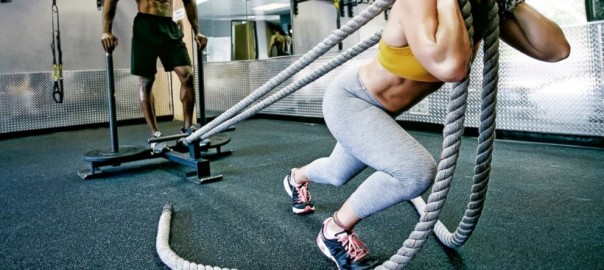Can Regenerative Therapy Help Crossfit Athletes?

All professional athletes have an intense routine to achieve top results. That inevitably leads to damage of their whole body, but the locomotor system takes most of the pounding. Although it makes sense that contact sports are the most common cause of injuries of the locomotor system, the fact is that although injuries in contact sports are more severe, it is the non-contact sports which have a higher frequency of injuries. Basically all kinds of sports that are highly competitive—football, basketball, soccer, tennis, golf, crossfit, fitness, etc.—always lead to some kind of injury. The question is: How can a professional athlete be treated and cured without the loss of his or her performance level?
Matt Chan, a professional crossfit athlete and competitor, rock climber, hunter, and skier suffered multiple meniscus tears in his left knee. He was feeling excruciating knee pain during any activity but refused surgery because he wanted to maintain his performance level and didn’t want to mess up his exercise routine. So he decided to try a new and promising medical procedure: stem cells and PRP treatment.
WHAT ARE STEM CELLS?
Stem cells are cells present in the bone marrow. They have an extraordinary feature of being able to transform themselves into any other type of cells. They are harvested from a patient’s own iliac bone, which is a part of the pelvis. A special needle is inserted into a patient’s bone marrow under ultrasound or X-ray guidance. Then a small amount of bone marrow blood containing stem cells is drawn. That blood is centrifuged in order to separate and concentrate stem cells, which are then injected directly into the injury site.
WHAT IS PRP?
PRP (Platelet-Rich-Plasma) is basically blood which contains higher levels of platelets than normal circulating blood (five to ten times higher). Platelets are harvested from a patient’s own blood. First, a small amount of blood is drawn. Then a part of that blood is put into a centrifuge which separates the platelets. These platelets are collected and mixed with the other part of the drawn blood in order to get a platelet-rich plasma which can be injected directly into the injured or damaged tissue.
ARE THESE PROCEDURES EFFECTIVE?
Yes they are, in 80 percent of the cases—a fairly high percentage by medical standards. The best way is to use these procedures together. Platelets contain growth factors which initialize stem cells activity and keep them active. Both procedures can be completed in one day, and full recovery is expected in under six weeks.
By combining these two procedures (stem cells injections followed by PRP injections to both of his knees) Matt’s recovery period lasted for only two months. After those two months, he felt like his knees were brand new again. He was able to continue high-intensity training, which allowed him to outperform his competitors.
Nowadays, the stakes are high in competitive sports, so the pressure for each athlete to return to full activity after an injury is enormous. The traditional method of therapy such as surgery and physiotherapy are just too slow by today’s standards; the recovery lasts for months or even a year or more. That’s why many professional athletes turn to regenerative therapy: stem cells and PRP treatment. Although additional research has to be done, this new kind of therapy has the potential to revolutionize sports injury management by utilizing the powerful biological potential of human body.
Image courtesy of http://abcnews.go.com/


